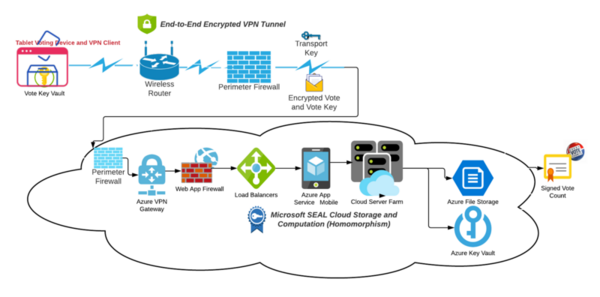Design and implementation of a cryptographically secure electronic voting infrastructure
(1) Paramus High School, Paramus, New Jersey, (2) New York University, New York, New York
https://doi.org/10.59720/21-240
Cyber security is the application of technologies, processes, and controls to protect against attacks on confidentiality, integrity, and availability. Cryptography maintains confidentiality by securing communications from being intercepted, provides integrity by preventing unauthorized modification of data, and provides availability by allowing data to be transmitted securely. There is currently limited to no application of cryptographic controls at election sites in today's voting environment due to the use of legacy systems and paper systems that do not support the technology required for encryption. This paper proposes an electronic voting solution to mitigate risk through the design and implementation of a secure, electronic voting app and infrastructure. Here, we present evidence, using a thorough National Institute of Standards and Technology (NIST) risk assessment, that removing human interaction remediates vulnerabilities within today’s infrastructure and mitigates overall risk. We also extract multiple NIST Special Publication 800-53 family controls to analyze the vulnerabilities in today’s voting infrastructure. Using our proposed secure electronic infrastructure, we mitigate the risk inherent in today’s election environment, and we propose a model to secure our democracy and the future prospect of voting electronically.
This article has been tagged with: